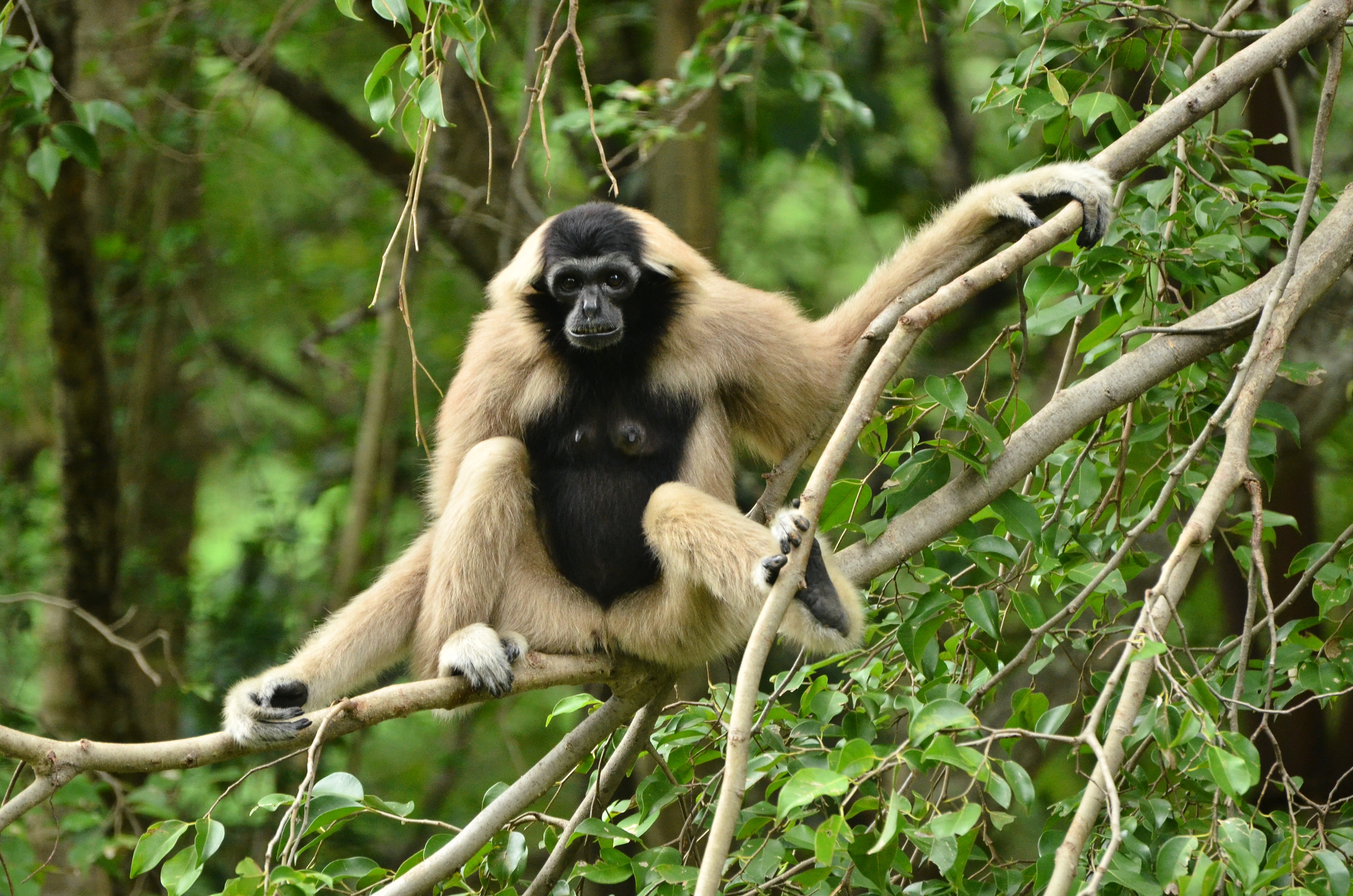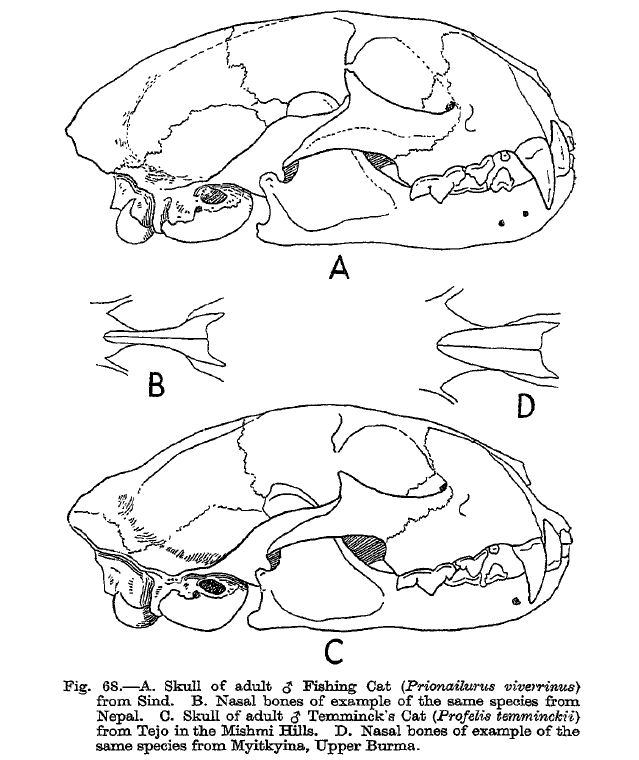|
Khao Soi Dao Wildlife Sanctuary
Khao Soi Dao Wildlife Sanctuary ( th, เขตรักษาพันธุ์สัตว์ป่าเขาสอยดาว) is a wildlife sanctuary in Thailand's Chanthaburi Province. It covers the area around Khao Soi Dao Tai and Khao Soi Dao Nuea (south and north Soi Dao mountains), the two highest peaks in the Chanthaburi Mountains of Eastern Thailand, which form part of the much larger Cardamom Mountains extending well into Cambodia. The mountains are covered in tropical rainforest and the Chanthaburi River originates from the Khao Soi Dao Tai mountain. The wildlife sanctuary neighbours the smaller Khao Khitchakut National Park to the south and Khao Sip Ha Chan National Park and Khao Ang Rue Nai Wildlife Sanctuary to the northwest. History Khao Soi Dao Wildlife Sanctuary was established in 1972 and covers , most of which is mountainous terrain. In 2007, the sanctuary was also designated as an Important Bird Area (IBA), thus of global importance for bird conservatio ... [...More Info...] [...Related Items...] OR: [Wikipedia] [Google] [Baidu] |
Great Hornbill
The great hornbill (''Buceros bicornis''), also known as the concave-casqued hornbill, great Indian hornbill or great pied hornbill, is one of the larger members of the hornbill family. It occurs in the Indian subcontinent and Southeast Asia. It is predominantly frugivorous, but also preys on small mammals, reptiles and birds. It has been listed as Vulnerable on the IUCN Red List since 2018. It is known to have lived for nearly 50 years in captivity. Due to its large size and colour, it is important in many tribal cultures and rituals. The Government of Kerala declared it as the official Kerala state bird. Taxonomy The great hornbill was formally described by the Swedish naturalist Carl Linnaeus in 1758 in the tenth edition of his ''Systema Naturae''. He placed it with the rhinoceros hornbill in the genus ''Buceros'' and coined the binomial name ''Buceros bicornis''. Linnaeus specified the location as China. The genus name is from Latin ''becerus'' meaning "horned like an ox" w ... [...More Info...] [...Related Items...] OR: [Wikipedia] [Google] [Baidu] |
Wildlife Sanctuaries Of Thailand
Wildlife refers to undomesticated animal species, but has come to include all organisms that grow or live wild in an area without being introduced by humans. Wildlife was also synonymous to game: those birds and mammals that were hunted for sport. Wildlife can be found in all ecosystems. Deserts, plains, grasslands, woodlands, forests, and other areas, including the most developed urban areas, all have distinct forms of wildlife. While the term in popular culture usually refers to animals that are untouched by human factors, most scientists agree that much wildlife is affected by human activities. Some wildlife threaten human safety, health, property, and quality of life. However, many wild animals, even the dangerous ones, have value to human beings. This value might be economic, educational, or emotional in nature. Humans have historically tended to separate civilization from wildlife in a number of ways, including the legal, social, and moral senses. Some animals, howev ... [...More Info...] [...Related Items...] OR: [Wikipedia] [Google] [Baidu] |
Pong Nam Ron District
Pong Nam Ron ( th, โป่งน้ำร้อน, ) is the easternmost district (''amphoe'') of Chanthaburi province, eastern Thailand. Geography Neighboring districts are (from the southwest clockwise) Khlung, Makham, Khao Khitchakut and Soi Dao of Chanthaburi Province. To the east are Battambang and Pailin of Cambodia. Border Crossings There are two border crossings into Cambodia in Pong Nam Ron. One is at Ban Pakkard ( th, บ้านผักกาด; ) in Klong Yai tambon. The Cambodian town across the border is Phsar Prum in Sala Krau district in Pailin municipality. The second crossing is at Ban Laem ( th, บ้านแหลม; ) in Thep Nimitr. The Cambodian village across the border is Daun Lem in Kamrieng district, Battambang Province. History The minor district (''king amphoe'') Pong Nam Ron was upgraded to a full district on 25 July 1941. Administration The district is divided into five sub-districts (''tambons''), which are further subdivided into 4 ... [...More Info...] [...Related Items...] OR: [Wikipedia] [Google] [Baidu] |
Route 317 (Thailand)
Route 317, or Highway 317, may refer to: Canada *Manitoba Provincial Road 317 * Prince Edward Island Route 317 * Quebec Route 317 *Saskatchewan Highway 317 China * China National Highway 317 Costa Rica * National Route 317 India * National Highway 317 (India) Japan * Japan National Route 317 United States * Colorado State Highway 317 * Connecticut Route 317 * Georgia State Route 317 * Louisiana Highway 317 * Maryland Route 317 * Minnesota State Highway 317 * Nevada State Route 317 State Route 317 (SR 317) is a state highway in Lincoln County, Nevada. It connects the ghost town of Elgin north to U.S. Route 93 (US 93) in the city of Caliente. Portions of the highway were heavily damaged by flooding in January 2005 and re ... * New Mexico State Road 317 * New York: ** New York State Route 317 (other) ** County Route 317 (Erie County, New York) * Ohio State Route 317 * Pennsylvania Route ... [...More Info...] [...Related Items...] OR: [Wikipedia] [Google] [Baidu] |
Chanthaburi
Chanthaburi ( th, จันทบุรี, ) is a town (''thesaban mueang'') in the east of Thailand, on the banks of the Chanthaburi River. It is the capital of the Chanthaburi Province and the Mueang Chanthaburi District. The town covers the two ''tambons'' Talat and Wat Mai of Mueang Chanthaburi District. As of 2005, the town had a population of 27,602. The town figures in the legacy of King Taksin. In 1981 the Thai cabinet passed a resolution to bestow on him the honorary title of ''the Great''. When the Bank of Thailand issued the 12th Series of banknotes, called ''The Great Series'', the monument of King Taksin the Great in the town's Tungnachaey recreational park appeared on the back of the 20 baht note issued 28 December 1981, the 214th anniversary of his coronation. Climate Chanthaburi has a tropical monsoon climate (Köppen climate classification ''Am''), with little variation in temperature throughout the year. Rainfall, however, varies dramatically by season. Ra ... [...More Info...] [...Related Items...] OR: [Wikipedia] [Google] [Baidu] |
Namtok Khao Soi Dao
Khao Soi Dao Wildlife Sanctuary ( th, เขตรักษาพันธุ์สัตว์ป่าเขาสอยดาว) is a wildlife sanctuary in Thailand's Chanthaburi Province. It covers the area around Khao Soi Dao Tai and Khao Soi Dao Nuea (south and north Soi Dao mountains), the two highest peaks in the Chanthaburi Mountains of Eastern Thailand, which form part of the much larger Cardamom Mountains extending well into Cambodia. The mountains are covered in tropical rainforest and the Chanthaburi River originates from the Khao Soi Dao Tai mountain. The wildlife sanctuary neighbours the smaller Khao Khitchakut National Park to the south and Khao Sip Ha Chan National Park and Khao Ang Rue Nai Wildlife Sanctuary to the northwest. History Khao Soi Dao Wildlife Sanctuary was established in 1972 and covers , most of which is mountainous terrain. In 2007, the sanctuary was also designated as an Important Bird Area (IBA), thus of global importance for bird conservation ... [...More Info...] [...Related Items...] OR: [Wikipedia] [Google] [Baidu] |
Pileated Gibbon
The pileated gibbon (''Hylobates pileatus'') is a primate in the gibbon family, Hylobatidae. The pileated gibbon has sexual dimorphism in fur coloration: males have a purely black fur, while the females have a white-grey colored fur with only the belly and head black. The white and often shaggy hair ring around the head is common to both sexes. The species has been identified as Endangered, and is listed in CITES Appendix I. Their main threat is habitat destruction, with the wild forest they live in being converted into farmland. This has led to local extinction in some areas. Also, like many other species of primate, they are hunted and captured for meat and to be sold into Wildlife smuggling. Many attempts have been made to survey and increase the species' numbers, both concerning their status in the wild, and in zoos. Range The range of the pileated gibbon is eastern Thailand, western Cambodia and southwest Laos. Its lifestyle is much like other gibbons: diurnal and arboreal ... [...More Info...] [...Related Items...] OR: [Wikipedia] [Google] [Baidu] |
Bos Gaurus
The gaur (''Bos gaurus''; ), also known as the Indian bison, is a bovine native to South Asia and Southeast Asia, and has been listed as Vulnerable on the IUCN Red List since 1986. The global population was estimated at a maximum of 21,000 mature individuals in 2016, with the majority of those existing in India. It has declined by more than 70% during the last three generations, and is extirpated from Sri Lanka and most likely Bangladesh. Populations in well-protected areas are stable and increasing. It is the largest species among the wild cattle and the Bovidae. The domesticated form of the gaur is called ''gayal'' (''Bos frontalis'') or ''mithun''. Taxonomy ''Bison gaurus'' was the scientific name proposed by Charles Hamilton Smith in 1827. Later authors subordinated the species under either ''Bos'' or ''Bibos''. To date, three gaur subspecies have been recognized: * ''B. g. gaurus'' ranges in India, Nepal and Bhutan; * ''B. g. readei'' described by Richard Lydekk ... [...More Info...] [...Related Items...] OR: [Wikipedia] [Google] [Baidu] |
Catopuma Temminckii
The Asian golden cat (''Catopuma temminckii'') is a medium-sized wild cat native to the northeastern Indian subcontinent, Southeast Asia and China. It has been listed as Near Threatened on the IUCN Red List since 2008, and is threatened by poaching and habitat destruction, since Southeast Asian forests are undergoing the world's fastest regional deforestation. The Asian golden cat's scientific name honours Coenraad Jacob Temminck. It is also called Temminck's cat and Asiatic golden cat. Taxonomy ''Felis temmincki'' was the scientific name used in 1827 by Nicholas Aylward Vigors and Thomas Horsfield who described a reddish brown cat skin from Sumatra. ''Felis moormensis'' proposed by Brian Houghton Hodgson in 1831 was a young male cat caught alive by Moormi hunters in Nepal. ''Felis tristis'' proposed by Alphonse Milne-Edwards in 1872 was a spotted Asian golden cat from China. It was subordinated to the genus ''Catopuma'' proposed by Nikolai Severtzov in 1853. Two subspecies a ... [...More Info...] [...Related Items...] OR: [Wikipedia] [Google] [Baidu] |
Panthera Tigris
The tiger (''Panthera tigris'') is the largest living cat species and a member of the genus '' Panthera''. It is most recognisable for its dark vertical stripes on orange fur with a white underside. An apex predator, it primarily preys on ungulates, such as deer and wild boar. It is territorial and generally a solitary but social predator, requiring large contiguous areas of habitat to support its requirements for prey and rearing of its offspring. Tiger cubs stay with their mother for about two years and then become independent, leaving their mother's home range to establish their own. The tiger was first scientifically described in 1758. It once ranged widely from the Eastern Anatolia Region in the west to the Amur River basin in the east, and in the south from the foothills of the Himalayas to Bali in the Sunda Islands. Since the early 20th century, tiger populations have lost at least 93% of their historic range and have been extirpated from Western and Central Asia, ... [...More Info...] [...Related Items...] OR: [Wikipedia] [Google] [Baidu] |
.jpg)
.jpg)



